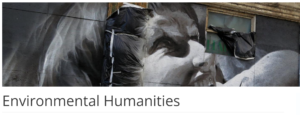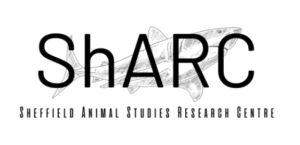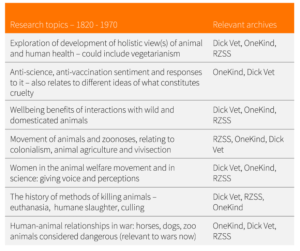Hello again!
This is my final week on the One Health project, in which I’ve undertaken research and academic engagement – it’s been a fascinating and exciting project to contribute to, with a fantastic team. I thought I’d provide a quick recap of what’s been done and what the future might hold in terms of engagement with the collections, as well as what I’ve learned from this experience.
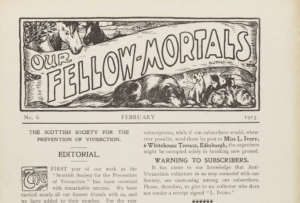
Image of Our Fellow Mortals Magazine, volume number 6, February 1913, SSPV
What’s been done in the research space?
- mapping of research topics across the collections – there is so much to continue to explore!
- writing research articles – bacterial infections and how animal welfare was implicated in related public health issues across all three collections (submitted to the British Journal for the History of Science), and women and the politics of care, exploring the OneKind and Royal Zoological Society of Scotland archives (about to be submitted to the Journal of Women in Culture and Society!)
- writing up of possible follow on grant for the Wellcome Trust
- lots of engagement with academics internally and externally (see previous blog post!)
The future?
As I’ve said before, these collections provide a wealth of material for researchers, across different disciplines, and I hope those reading this blog post consider engaging with them! If you would like to view items you can book a time in the reading room:
Visiting in Person | The University of Edinburgh
You can peruse the Dick Vet and OneKind archives here:
The RZSS archive will be catalogued over the next year, an exciting follow on project. The future will no doubt include the realisation of multiple projects based on the archival materials, potentially around changing conceptions of cruelty since the early 1900s, exploration of conceptions of wellbeing benefits of interactions with animals and nature in the early to mid-1900s in Scotland, profiling various prominent women who appear in the archival materials to ensure their place in historical research/record, and much more!
What have I learned?
Archival research is a vastly rewarding journey of discovery. At first I felt quite overwhelmed by the amount of items in each archive and wondered how I would be able to digest it all – in the end I couldn’t look at everything in detail, instead becoming selective, in order to complete the two short research projects. But there is much I would still love to see within the collections! I also realised that finding out more about the lives of individuals named in annual reports and magazines (for example) takes much longer than you might anticipate, since some of the women in particular were relatively obscure (although they shouldn’t be!) – hunting for hours turned up almost nothing!
Finally, I learned so much about the actual process of doing archival research, huge thanks to the project archivist and lead, Fiona Menzies, and Amanda Dodd in conservation. I also found out that Fiona makes great cakes, for instance this vegan one of Our Fellow Mortals magazine (genius!), devoured in the kitchen today as we wind down the project:
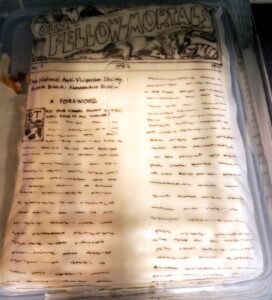
Cake of Our Fellow Mortals magazine!
To introduce you to the methods used to handle various items, please watch this video:
The University of Edinburgh – Guide to Handling Collections Material (youtube.com)
Do contact CRC for more information and access: Centre for Research Collections | The University of Edinburgh
While I am leaving the One Health project, I’m still very happy to engage with anyone to share insights regarding what’s in the collections, so don’t hesitate to get in touch!
Elizabeth

